Table of Contents |
Raffaello Sanzio da Urbino, known as Raphael, was born on April 6, 1483, in Urbino, Italy, He was a master painter of the Italian High Renaissance, celebrated for his clarity of form, ease of composition, and visual achievement of human grandeur. Raphael, along with Michelangelo and Leonardo da Vinci, forms the traditional trinity of great masters of the Italian High Renaissance.
Raphael was born into an artistic family. His father, Giovanni Santi, was a court painter to the Duke of Urbino and provided young Raphael with his initial training. After his father's death when Raphael was 11, he continued to develop his skills in the workshop of Pietro Perugino, one of the most successful painters in Italy at the time.
In 1508, Raphael was summoned to Rome by Pope Julius II, who commissioned him to decorate the papal apartments in the Vatican Palace. This commission marked a significant turning point in Raphael's career, allowing him to showcase his genius on a grand scale.
Take a look below at the Raphael’s 1508 fresco commissioned by Pope Julius II, more commonly called The School of Athens.
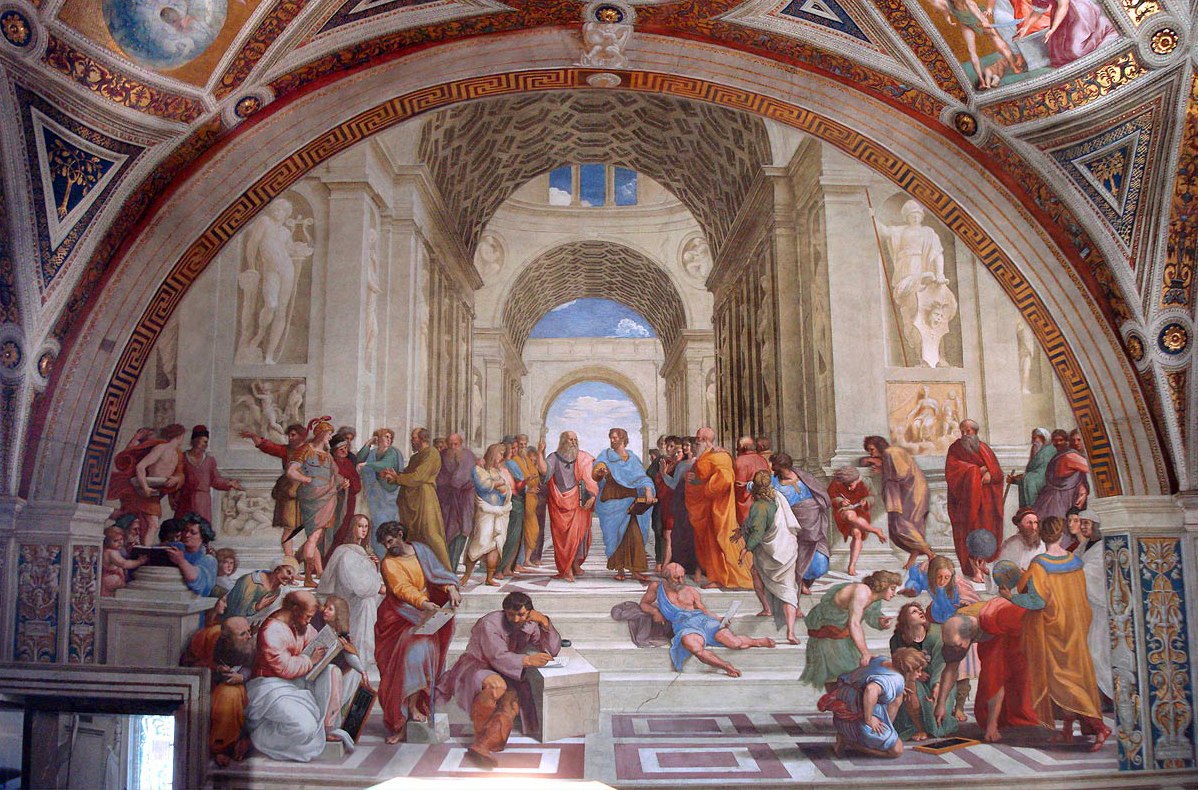
The School of Athens
Apostolic Palace, Vatican City
1510–1511
Fresco
This work of art is directly across from another fresco, which is not pictured in the apartment, called Theology. It stands as one of the most important works of art of the High Renaissance and exudes the mastery of classical form and composition for which Raphael was known. The whole composition is placed within an ancient architectural setting. It is symmetrically balanced and clearly defined, creating an area of substantial breadth and depth.
The subject of the mural is the Platonic Academy, which is the place in Athens where Plato would teach philosophy to his students. The fresco is a very stable composition, with little movement conveyed.
Below is a section of the painting from the lower left-hand corner.
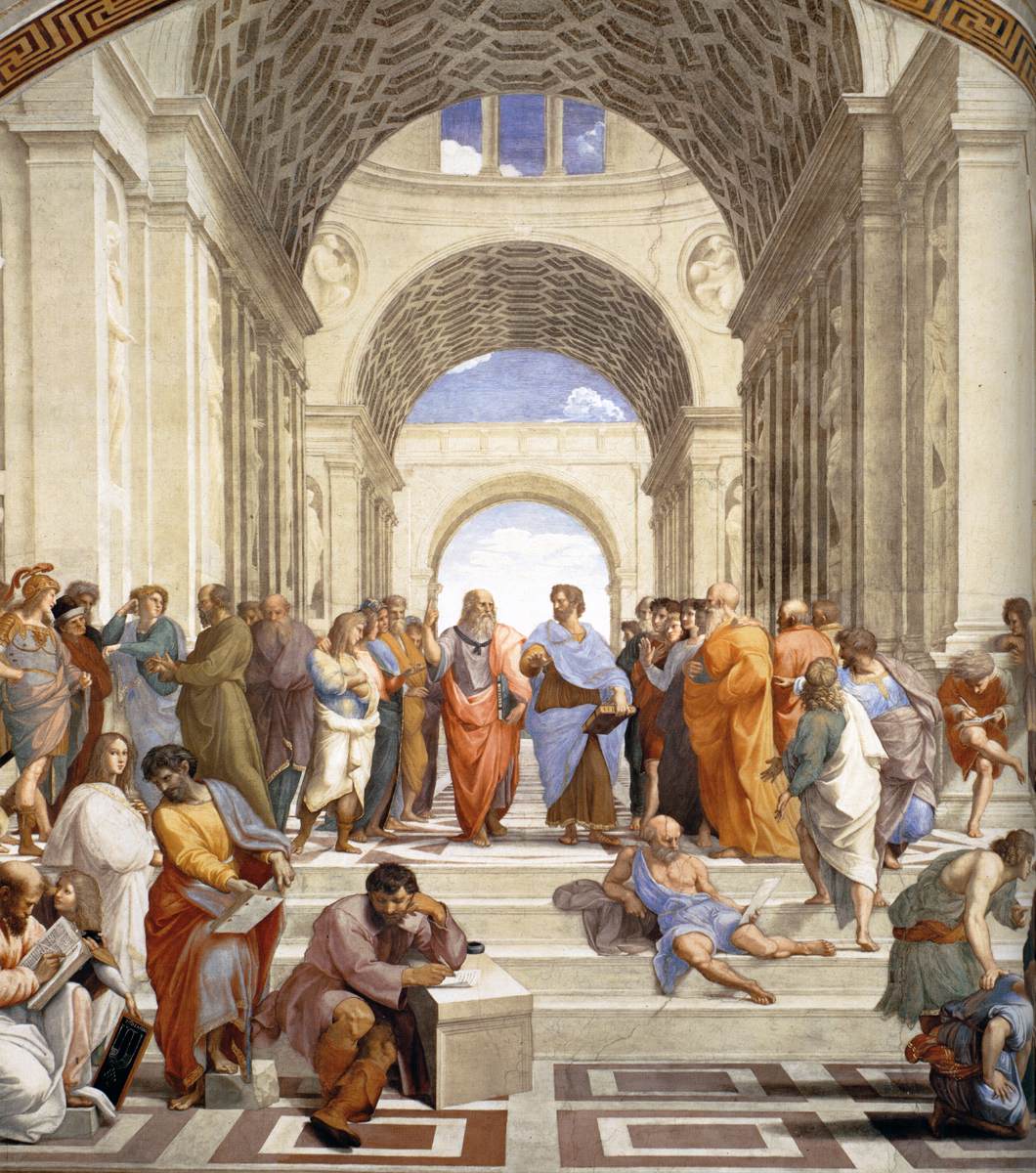
This section depicts Greek mathematician and philosopher Pythagoras, shown writing in a book, surrounded by people. The individual sitting alone, resting his head on his hand, is believed to be a portrait of Raphael’s contemporary, the artist Michelangelo. The rest of the left side of the image is composed of other ancient philosophers that flank one of the central figures.
In the image below, some of the other philosophers flank the central figure of Plato.
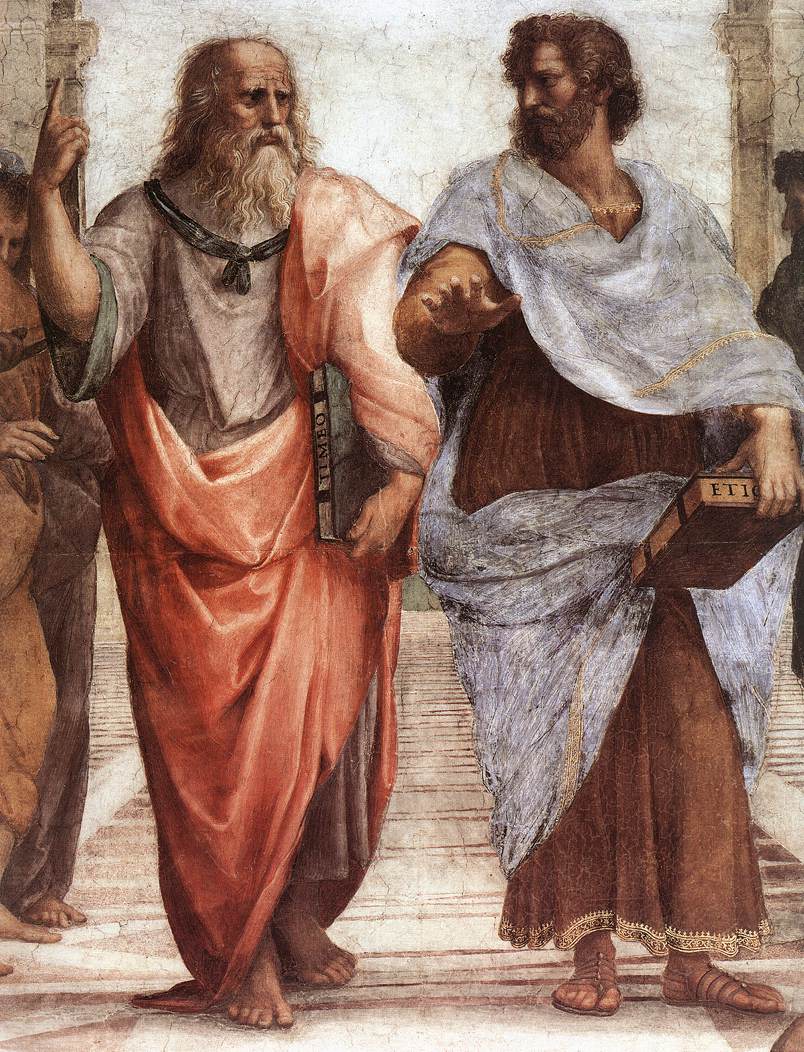
In the above image, Plato, shown in red, holds one of his books and gestures towards the heavens and the mysteries of the universe, which he and other metaphysical philosophers contemplated. The other figure, in blue, is Aristotle. On his side of the image are the philosophers and scientists concerned with understanding nature. Plato and Aristotle were positioned at a vanishing point of the fresco, demonstrating Raphael’s interest in linear perspective and balanced composition.
The upper right-hand portion of the image, shown below, depicts the astronomers Zoroaster and Ptolemy, holding globes.
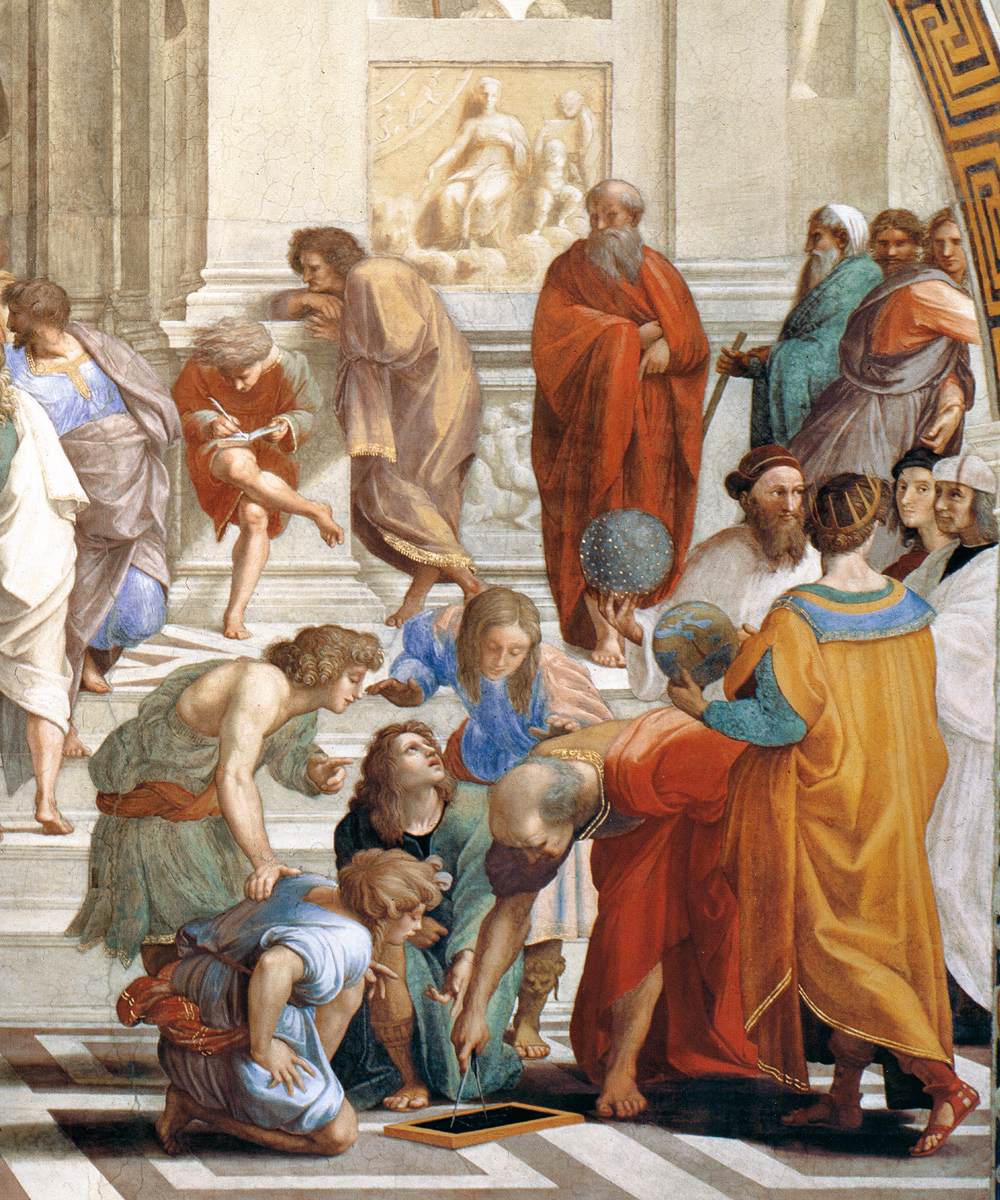
Finally, the artist Raphael is shown, and just below him are students surrounding the famous Greek mathematician, Euclid. Euclid is best remembered for his contributions to our understanding of geometry.
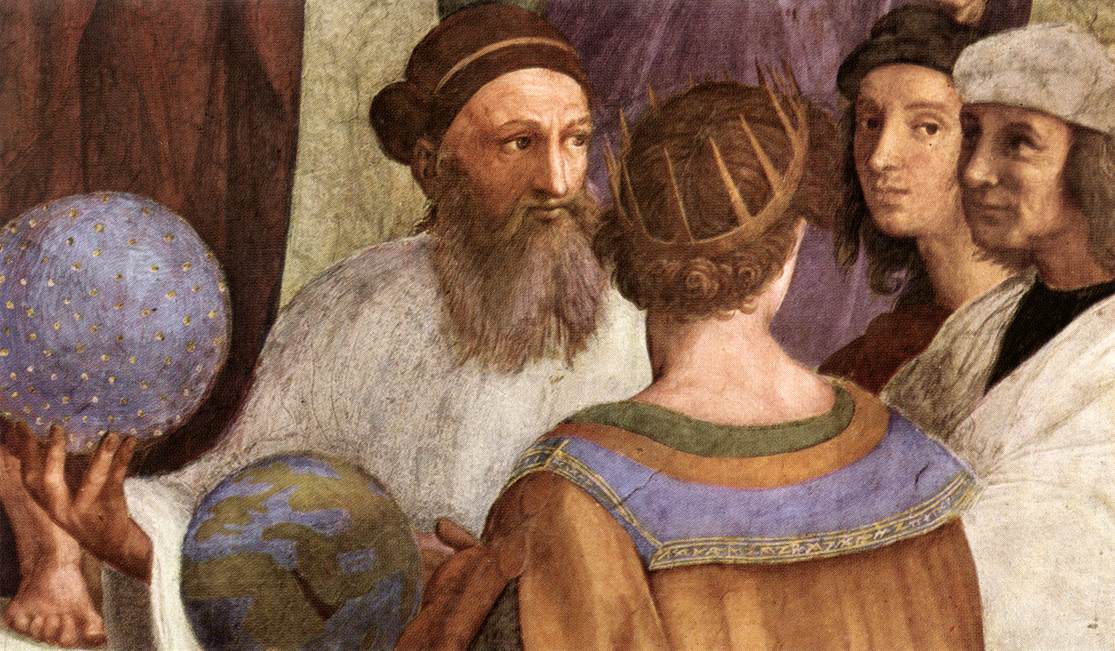
Source: THIS TUTORIAL WAS AUTHORED BY IAN MCCONNELL AND TAMORA KOWALSKI FOR SOPHIA LEARNING. PLEASE SEE OUR TERMS OF USE.